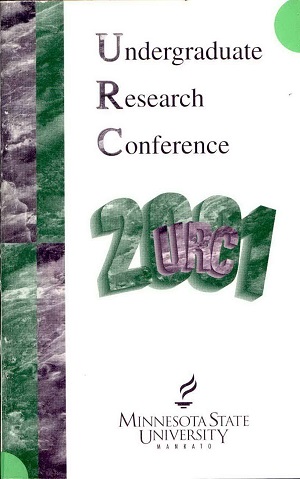Investigations of the Affect of Ta on Powder-In-Tube Nb3Sn Superconducting Wires
Location
CSU
Student's Major
Physics and Astronomy
Student's College
Science, Engineering and Technology
Mentor's Name
Louis Schwartzkopf
Mentor's Department
Physics and Astronomy
Mentor's College
Science, Engineering and Technology
Description
Studying the magnetization and heat capacity data of superconducting materials allows many of the characteristic superconducting properties to be measured directly or extrapolated from the data. This research compares binary and ternary (Ta) Nb3Sn multifilamentary Powder-In-Tube superconducting wires made by ShapeMetal Innovations, Holland. The Powder-In-Tube process allows for growth of an inhomogeneous Nb3SnA15 superconducting layer due to heat treatment. The two wires compared had different sizes and numbers of filaments. To examine the effect of Ta and heat treatments on superconducting properties, image analysis and magnetization and heat capacity measurements and were conducted. Image analysis revealed the growth of the A15 layer as a function of time. Magnetization measurements found higher upper critical field and irreversibility field measurement in the 47-hour heat-treated ternary wire. Very little difference between the wires was found for critical temperature and critical current density measurements.
Investigations of the Affect of Ta on Powder-In-Tube Nb3Sn Superconducting Wires
CSU
Studying the magnetization and heat capacity data of superconducting materials allows many of the characteristic superconducting properties to be measured directly or extrapolated from the data. This research compares binary and ternary (Ta) Nb3Sn multifilamentary Powder-In-Tube superconducting wires made by ShapeMetal Innovations, Holland. The Powder-In-Tube process allows for growth of an inhomogeneous Nb3SnA15 superconducting layer due to heat treatment. The two wires compared had different sizes and numbers of filaments. To examine the effect of Ta and heat treatments on superconducting properties, image analysis and magnetization and heat capacity measurements and were conducted. Image analysis revealed the growth of the A15 layer as a function of time. Magnetization measurements found higher upper critical field and irreversibility field measurement in the 47-hour heat-treated ternary wire. Very little difference between the wires was found for critical temperature and critical current density measurements.



